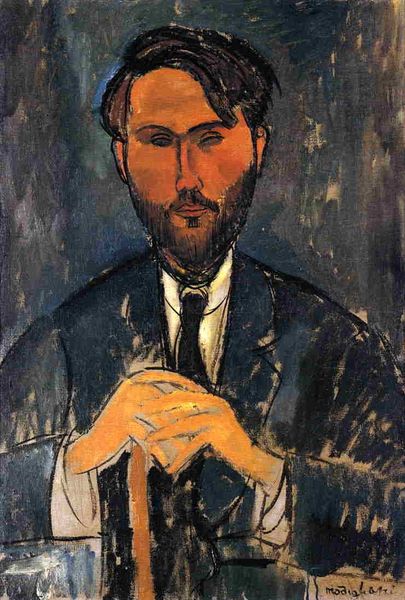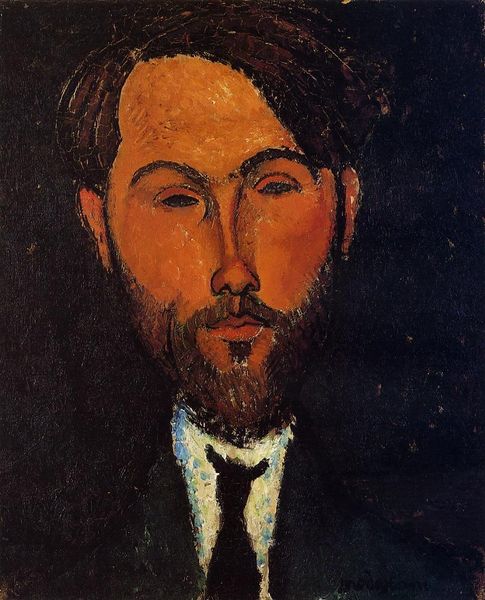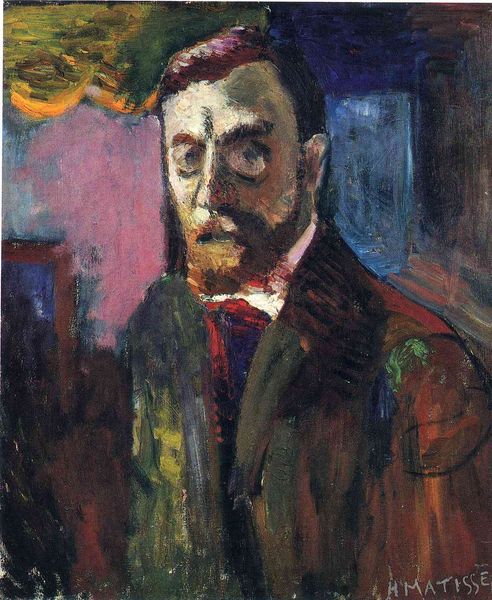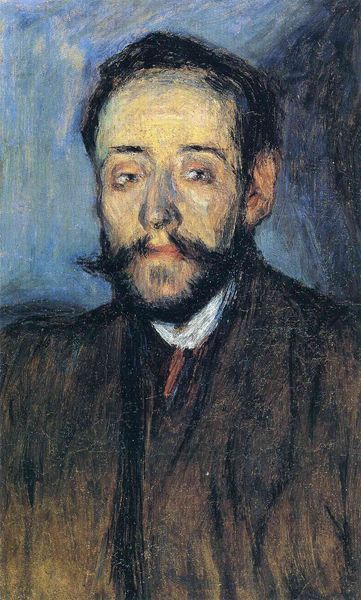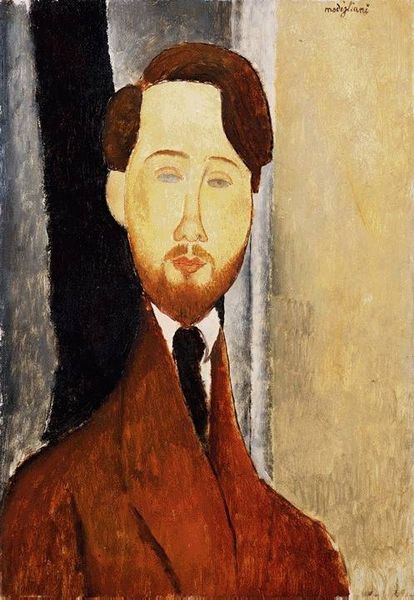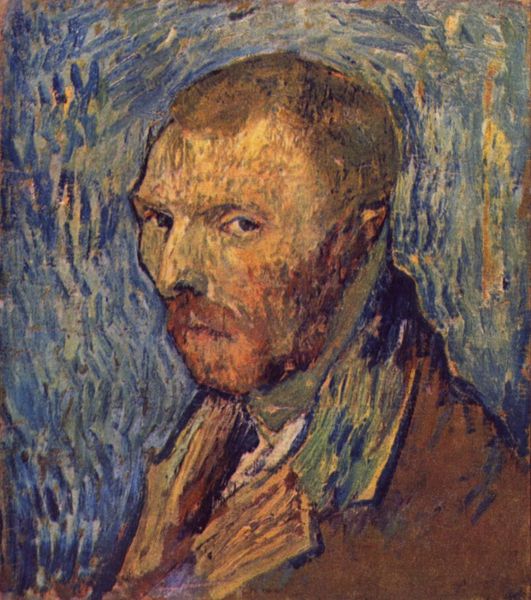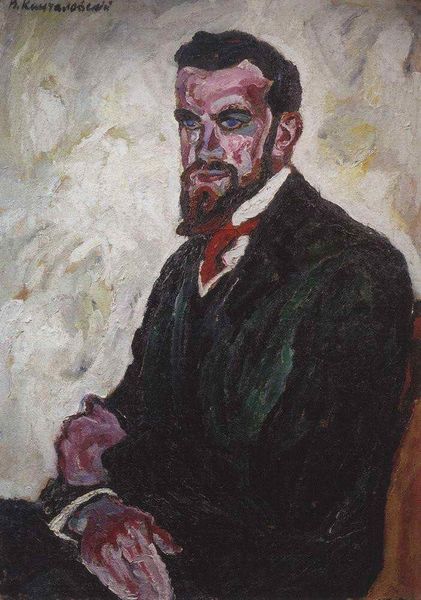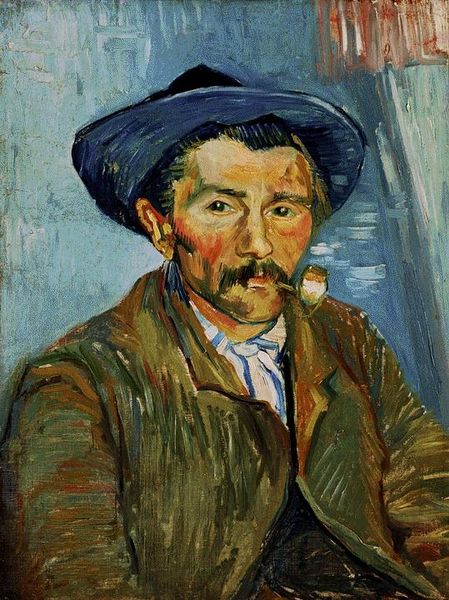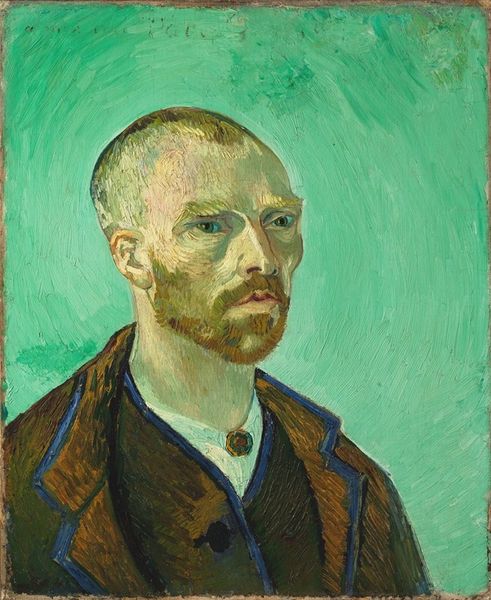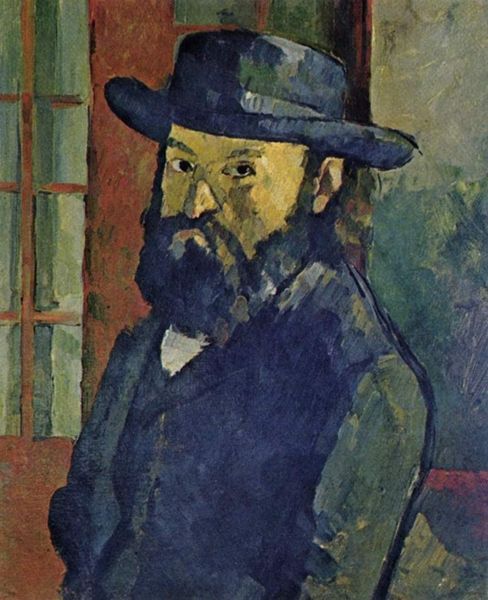
#
portrait
#
portrait reference
#
famous-people
#
male-portraits
#
acrylic on canvas
#
portrait head and shoulder
#
animal portrait
#
animal drawing portrait
#
portrait drawing
#
facial portrait
#
portrait art
#
fine art portrait
#
digital portrait
Dimensions: 46 x 38 cm
Copyright: Public domain
Paul Gauguin’s “Portrait of William Molard,” now at the Musée d'Orsay in Paris, is a striking study in color and form. Gauguin uses oil on canvas to create a powerful, almost unsettling image, dominated by a palette of purples and yellows. The composition is tightly framed, focusing attention on Molard’s face. Notice how Gauguin employs contrasting colors; the yellow of the face is set against the surrounding purples, creating a visual tension. This isn't merely a depiction of Molard, but a construction of him through color and form. The brushstrokes are visible, adding texture and depth, but also reminding us of the artist's hand in the creation of the image. Gauguin’s approach challenges traditional portraiture. It's less about capturing a likeness and more about exploring the expressive potential of color and the semiotic significance of the gaze. The painting invites us to consider how identity is constructed through visual language, questioning fixed notions of representation and perception.
Comments
No comments
Be the first to comment and join the conversation on the ultimate creative platform.
